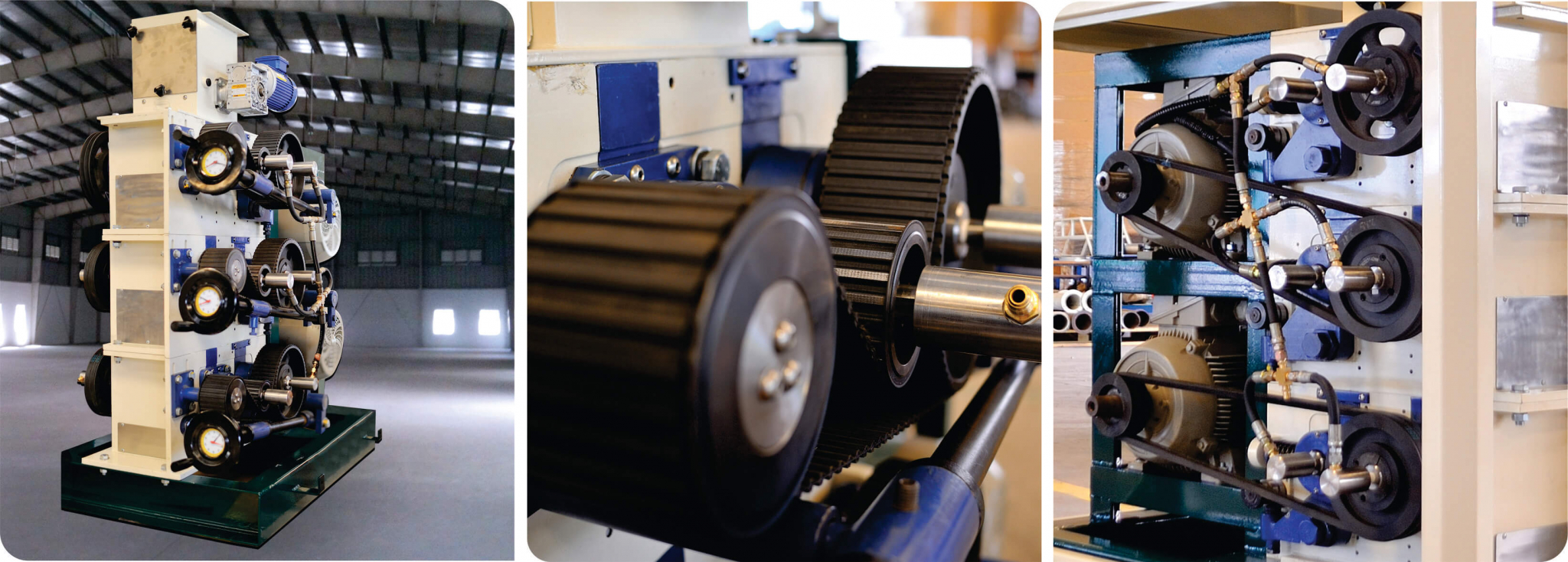Industrial Coffee Grinder: Advantages, Disadvantages, and Features to Consider
Industrial Coffee Grinder: Advantages, Disadvantages, and Features to Consider
Blog Article
Industrial Coffee Mill Guide: Boost Effectiveness and Quality
In the affordable landscape of coffee manufacturing, picking the right commercial coffee grinder plays a critical duty in boosting both effectiveness and product top quality. Comprehending the subtleties of different mill kinds and vital features-- such as customizable work setups and durable building and construction-- can substantially influence the final flavor profile of the coffee. Furthermore, the optimization of the grinding process, combined with thorough maintenance, is essential for sustaining efficiency with time. As we check out these essential components, it becomes noticeable that the ramifications extend beyond plain tools choice, influencing overall business success in methods that require closer evaluation.
Understanding Grinder Types
When picking an industrial coffee mill, recognizing the different types available is critical for enhancing both taste removal and operational efficiency. The 2 key kinds of mills are blade mills and burr grinders.

Ultimately, selecting the appropriate kind of grinder is integral to keeping top quality and performance in coffee manufacturing, making it crucial for organizations to invest in top notch burr grinders for optimum results.
Secret Features to Think About
Selecting an industrial coffee grinder calls for careful factor to consider of several key features that can dramatically influence both efficiency and the overall coffee experience. One of the main elements to review is the grinding device. Burr grinders are typically chosen over blade mills, as they offer a consistent work size, which is crucial for ideal extraction and taste.
Another vital feature is the mill's capability. Depending on the volume of coffee you require to procedure, choose a design that can handle your needs without sacrificing rate or high quality. Furthermore, think about the grind settings supplied. A flexible grinder with numerous settings permits you to customize the grind dimension to various developing methods, improving the coffee's taste account.
Examine the mill's sound level, particularly in an active coffee shop or production atmosphere, where extreme sound can be disruptive. Spending in a grinder that stabilizes these features can significantly improve both operational efficiency and the high quality of the coffee served.
Optimizing Grinding Process
To attain the best outcomes in coffee preparation, maximizing the grinding procedure is important. The work size considerably influences extraction, taste, and general high quality of the made coffee. Different developing techniques need certain grind sizes; for circumstances, espresso requires a great grind, while French press necessitates a crude structure. Comprehending the partnership in between work size and brewing approach is the primary step in optimization.


In addition, monitoring the grinding rate can enhance the process. Slower grinding usually generates much less warmth, protecting fragile flavors and scents. On the other hand, quicker grinding might generate too much warmth, negatively affecting the coffee's quality.
Maintenance and Treatment Tips
Proper upkeep and treatment of commercial coffee grinders are necessary for ensuring optimum performance and longevity. Routine cleaning is the foundation of maintenance; residue buildup can impact taste and grinding performance. It is suggested to cleanse the grinder after each use, cleaning down the outside and getting rid of any coffee premises from the burrs.
Additionally, inspect the grinding burrs for damage. Dull burrs can endanger grind uniformity, so they need to be changed as required. Industrial Coffee Grinder. Occasionally calibrating the grinder is likewise vital, as this maintains the preferred work size for different brewing methods
Lubrication of relocating parts should be carried out according to the supplier's specs, as this decreases rubbing and extends the life of the tools. It is vital to make use of food-grade lubricants to guarantee security and compliance with wellness laws.
Finally, keep the grinder in a stable and completely dry setting to stop rust and corrosion. By sticking to these upkeep and treatment tips, drivers can improve the effectiveness of their industrial coffee mills while making sure top quality output and expanded operational life.
Roi Analysis
Assessing the roi (ROI) for industrial coffee grinders is crucial for businesses looking for to enhance their coffee manufacturing capabilities. A detailed ROI evaluation helps identify the economic viability of purchasing top notch mills, permitting organizations to consider the first expenses against prospective gains.
Analyze the purchase cost of the mill, including installment and any type of necessary alterations to existing infrastructure. High-performance mills typically lead to reduced grinding time and raised throughput, which can dramatically boost performance.
Additionally, take into official site consideration the effect on product top quality. Industrial Coffee Grinder. Superior grinders generate a Discover More more constant grind size, which can boost taste profiles and customer fulfillment, ultimately driving sales. By enhancing the quality of the end product, businesses can warrant greater pricing, resulting in raised revenue
Conclusion
In summary, an industrial coffee mill plays a crucial function in improving both effectiveness and product quality within coffee manufacturing. By picking high-grade burr mills equipped with essential features such as flexible grind setups and long lasting building and construction, services can make sure optimum flavor extraction. Additionally, regular upkeep is essential for maintaining mill performance and making best use of consumer contentment. Eventually, the strategic investment in a trustworthy mill contributes significantly to improved earnings and competition in the coffee sector.
In the competitive landscape of coffee manufacturing, choosing the ideal industrial coffee mill plays a pivotal function in enhancing both performance and product high quality. The 2 primary types of grinders are blade grinders and burr grinders. Within the burr grinder category, there are flat burr grinders and cone-shaped burr mills, each with its advantages. Burr mills are typically liked over blade grinders, as they offer a regular grind size, which is essential for optimum removal and flavor.
In recap, an industrial coffee grinder plays an official statement essential function in enhancing both performance and product high quality within coffee production.
Report this page